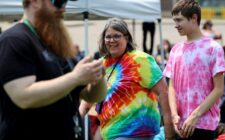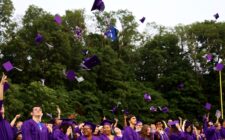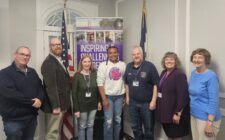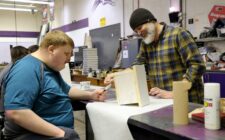On a Friday in September, students in Jessica Dow’s classroom at Sunnyside Elementary School took turns throwing the brightly colored paper airplanes they had carefully folded and decorated through the air to see whose could fly the farthest.
It was a fun and seemingly simple activity, but it was one that followed a lesson in the principles of aerodynamics: lift, thrust, drag, and weight.
“They latched right onto it,” Devin Rohr said of his students who did a similar activity after
learning about the physics behind flight.
Dow is a second-year teacher who last year taught kindergarten, and Rohr is in his 10th year of teaching, the past three of which were spent teaching math at Edward Stone Middle School.
Now, the two are pioneering the Burlington Community School District’s first year of K-4 STEM. Like music and art and P.E., STEM is a special class that students have either once or twice a week depending on the rotation.
Dow and Rohr each split their days between two buildings: Dow at Sunnyside and North Hill, and Rohr at Grimes and Black Hawk.
“It’s new and it’s exciting,” Dow said. “We went to a (STEM) conference over the summer and I was completely engrossed with it … Me as an adult who didn’t have technology growing up as much as these kids do, I was completely like OK, yes, if I can do this, these kids are just going to show me up. They’re going to be teaching me things by the end of the school year.”
“Right now, it’s just all about teamwork, trying new things and taking risks and being OK with failure,” Rohr said, reflecting on a recent lesson. “My question to them was why is failing good, and they’re really responsive, like you learn from your mistakes. One girl said, ‘My brother always said because he’s a wrestler that if you always win, you never learn.’ That was a third-grader.”
The students have worked together to build towers out of index cards and Legos. Time is taken after each activity to discuss what worked well, what didn’t, and what could be done differently. The activities, combined with the debriefing, help the students learn to listen to others’ ideas, as well as to give and receive critiques in a constructive way.
With those lessons complete, second- through fourth-graders took it a step further, working in teams to build their dream home.
“We read the story, ‘If I Built a House,’ and it’s this kid who just designs these elaborate rooms,” Dow said.
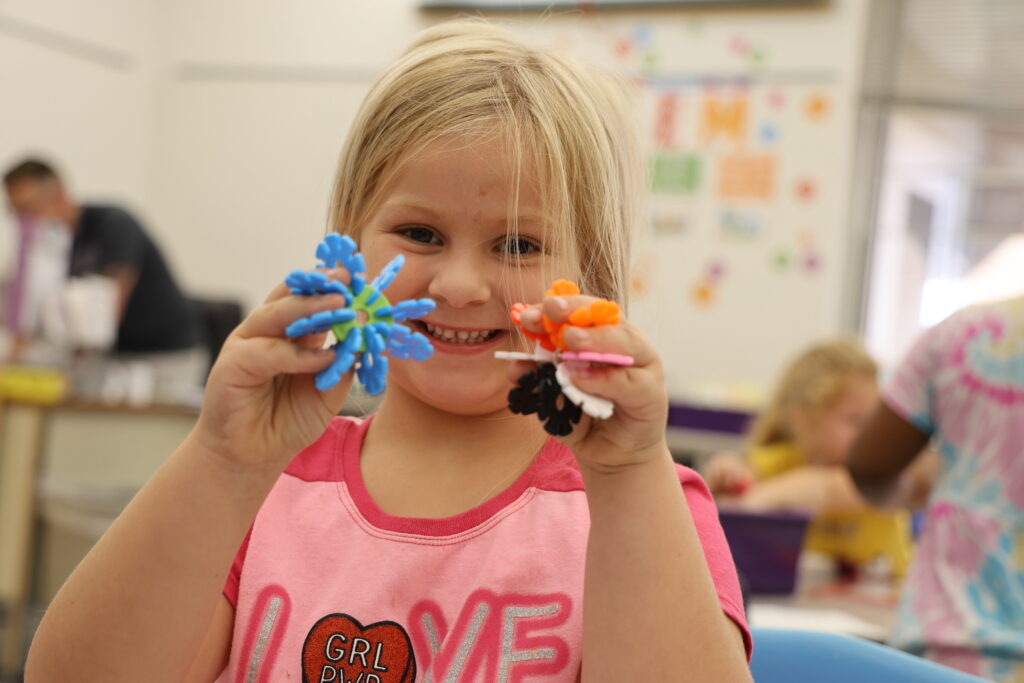
during free-build time in Devin Rohr’s classroom at Black
Hawk Elementary School.
After reading the story, each student was asked to design their own floor plan and their room in their house. Then they were told that their classmates at their table are now their roommates and instructed to combine their ideas and imaginations to design a single home. The homes have had everything from game rooms to Minecraft rooms to aquarium rooms.
“Our goal was to think outside of what a typical house has, which is a kitchen, a bathroom and at least a bedroom,” Dow said. “Some people have guest rooms, so instead of a guest room or instead of a playroom, what would you have your room be?”
With their plans complete, the students then built models of the homes using 3-D shapes. Dow was pleasantly surprised to learn many of her students already knew what a rectangular prism is.
With a solid grasp of teamwork instilled in their students, Dow and Rohr now are focusing on the scientific method with a series of kid-friendly experiments — magic pepper, lemon volcano, building a lava lamp, catapult and boat, among other things — to build a basis of understanding for things like surface tension, chromatography, chemical reactions, and physics.
As the year progresses, Dow and Rohr plan to further stratify their lessons on a grade-level basis so as not to underwhelm older students or overwhelm the younger scholars. Thus far, however, students have been eager to engage in whatever challenge is put before them.
“In my head I’m thinking, OK, they’re 5, so maybe two layers,” Dow said of her kindergarteners when they did the index card towers. “There were kids who were building seven, eight layers tall because they just figured it out and they’re like, ‘This makes sense in my brain.’”
Dow and Rohr are excited about the impact that earlier exposure to STEM will have on their students down the road.
“I have a friend who’s an architect and he said if we never had any of those (engineering) courses in high school, he would have never decided to go into that,” said Dow, a 2018 Burlington High School graduate. “It was just because of the opportunities we had. So I think if we start exposing children as young as kindergarten and working our way all the way up, even if we don’t hit technology super hard in K-4, but just the basics of what is STEM, and then when they get to middle school, they get even more of it, I mean, some of these kids, we’re going to have astronauts from this group.
“We can think as big as we want when it comes to it because we never know. We have great minds here.”
Rohr said he hopes K-4 STEM will help to empower students to take advantage of the wide variety of opportunities they’ll encounter down the road.
“My hope is that by exposing kids this young to STEM and by giving them so many opportunities to be creative and think outside the box and be able to be hands-on in all these projects, they can then go on to Aldo, and Aldo has their computer science stuff, so they’ll have some coding background and be a little more comfortable going into it, and so it’s going to ease that stress later on. As (their experience) builds up, they’re going to find their niche and be able to go in whatever direction and follow our career pathways.”



